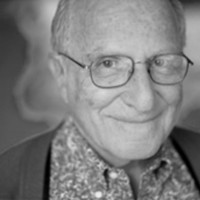
March 24, 2013
Four Tranformative Business Opportunities in Emerging Markets
From a talk at the University of California, Berkeley-Haas School of Business March 13, 2012
I’m going to describe a little bit about the four businesses and then we’ll have a little bit of time for question and answers. Here’s an example in the area of health. The four businesses I talked about are: health, education, water, and energy. One opportunity in health is that about a billion people need reading glasses. You don’t have to design a technology; you can actually have reading glasses of various strengths built in mainland China for about 50 cents or less. The real challenge is the global distribution system and a robust sales rack that is available in the village. If a farmer in Orissa can’t read what’s on the package of vegetable seeds she might have a lot of trouble deciding what seeds to buy. That kind of a business can reach 100 million people who can’t see straight now. I’ve talked about the affordable safe drinking water model that we’re developing – it has huge potential economic impact and profitability for the company. In solar energy I think it’s possible to cut the functional cost of photovoltaics by 40 percent by using a low cost solar concentrator that concentrates ten times as much sunlight on a smaller solar strip. We are going to run a test to see if we can do that. D-Rev did that successfully by turning a 2 ½ watt into about 20 watts, [and] we are going to see if we can do that to produce 1,500 watts, which would then make photovoltaics competitive for solar pumping with diesel pumps. There are maybe 15 million diesel pumps in India today. Here’s another major initiative that we’re working on…coal represents 40 percent of carbon emissions in the world, and recently there has been tremendous interest on the part of utilities in Europe in replacing coal with torrefied briquettes. They’re using timber byproducts like sawdust and bark. They’re building fairly expensive $10 million to $40 million plants in North America that really do an initial stage of pyrolysis. They heat sawdust to something like 300 degrees for three hours or so in the absence of oxygen that produces a blackened product, which can be coal fired with coal without any capital investment. If you burn plant biomass, it has taken carbon out of the air and then if you burn it efficiently, it puts it back with zero unbalanced carbon emissions impact, compared to taking coal which is sequestered under the ground and releasing it in the air. So this is a major initiative going on now, financed by utility companies in Europe. The thing is that you can do the same with any plant biomass. Six billion tons of coal is burned every year, and there’s four billion tons of agricultural waste produced every year. The real challenge is that waste is dispersed in decentralized locations in villages. When it’s bulky and relatively cheap, the transport costs kill you. So when the process of designing not a $10 million torrefaction plant but a $10,000 village-based torrefaction plant with a three kilometer collection radius, it’s the reverse of last-mile distribution — it’s last mile collection. If that’s successful it could be a $10 billion dollar company. We’re doing a beta test in India over the next six months to make that work. Right now, there’s 1.25 billion tons of charcoal. That’s a $15 billion market today — just charcoal. Just to wrap up, there are 2.6 billion customers waiting for a revolution in global business. I ask how many of you can help lead that revolution?
Observed
View all
Observed
By Paul Polak
Related Posts

Graphic Design
Sarah Gephart|Essays
A new alphabet for a shared lived experience

Arts + Culture
Nila Rezaei|Essays
“Dear mother, I made us a seat”: a Mother’s Day tribute to the women of Iran

The Observatory
Ellen McGirt|Books
Parable of the Redesigner

Arts + Culture
Jessica Helfand|Essays
Véronique Vienne : A Remembrance
Recent Posts
Compassionate Design, Career Advice and Leaving 18F with Designer Ethan Marcotte Mine the $3.1T gap: Workplace gender equity is a growth imperative in an era of uncertainty A new alphabet for a shared lived experience Love Letter to a Garden and 20 years of Design Matters with Debbie MillmanRelated Posts

Graphic Design
Sarah Gephart|Essays
A new alphabet for a shared lived experience

Arts + Culture
Nila Rezaei|Essays
“Dear mother, I made us a seat”: a Mother’s Day tribute to the women of Iran

The Observatory
Ellen McGirt|Books
Parable of the Redesigner

Arts + Culture
Jessica Helfand|Essays

 Dr. Paul Polak is the author of Out of Poverty: What Works When Traditional Approaches Fail, which has become a renowned resource for practical solutions to global poverty. His new book, co-authored with Mal Warwick is the Business Solution To Poverty, Designing Products and Services For Three Million New Customers.
Dr. Paul Polak is the author of Out of Poverty: What Works When Traditional Approaches Fail, which has become a renowned resource for practical solutions to global poverty. His new book, co-authored with Mal Warwick is the Business Solution To Poverty, Designing Products and Services For Three Million New Customers.